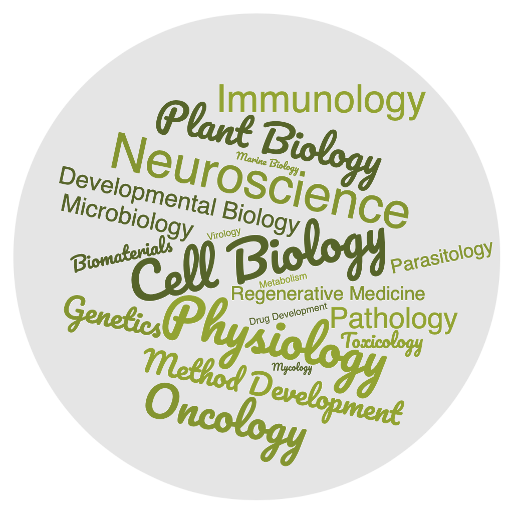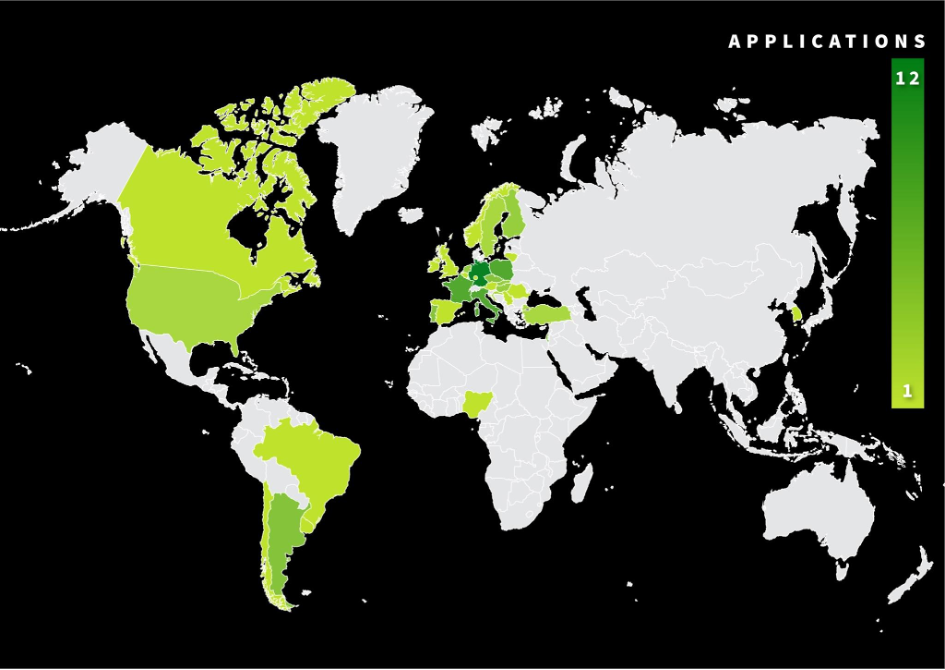
Successful projects selected to benefit from the Euro-BioImaging User Access Fund
In 2021, Euro-BioImaging launched its pilot call for funded user projects to be supported by an internal Euro-BioImaging User Access Fund. This initiative was incredibly successful, resulting in 80+ applications from researchers in more than 30 different countries around the world. In what was an extremely competitive evaluation, our panel of reviewers and scientific experts selected 10 of the most excellent proposals for funding. Successful proposals were judged to be scientifically excellent, highly impactful and likely to provide key advances in their field. In this article, we share some statistics and trends from this open call, and draw attention to a generous initiative from France BioImaging. Thank you so much to all who participated. We look forward to many exciting user projects in the coming months!
Which imaging technologies were the most requested?
A broad range of different imaging technologies were requested in our first Open Call (see Technology tables below). Overall, 70 proposals involved biological imaging technologies & 15 proposals requested biomedical imaging technologies.
The diversity of the requested technologies reflects the wide range of imaging methods that are important in biological research processes. We also saw particularly high application numbers for Electron Microscopy and Correlative Light and Electron Microscopy services, compared to standard operations, highlighting the high demand for these technologies if funding and expertise are available.
At the same time, we also see many requests for fairly standard techniques, which are almost always requested due to the specific Node expertise in the application of those techniques to specific research topics and the related expertise in specific imaging protocols or modifications made to the systems.
Interestingly, applications for biomedical imaging technologies for plant, animal and human studies have been received, reflecting the wide range of topics where these technologies and the expertise available at the Euro-BioImaging Nodes can be exploited.
Most requested biomedical imaging technologies
|
Technology
|
Number of requests
|
|---|---|
|
7 | |
|
4 | |
In vivo Optical Imaging |
2 |
|
1 | |
Mass Spectrometry Imaging (for medical applications) |
1 |
|
1 |
Most requested biological imaging technologies
|
Technology
|
Number of requests
|
|---|---|
|
15 | |
Laser Scanning Confocal Microscopy / Spinning Disk Confocal Microscopy |
13 |
|
11 | |
|
6 | |
|
6 | |
|
6 | |
Mass Spectrometry-based Imaging (for biological applications) |
6 |
|
5 | |
|
5 | |
|
4 | |
|
1 | |
|
1 | |
|
1 | |
|
1 |
Which Nodes were the most requested?
Since the mission of Euro-BioImaging is to foster open access to imaging facilities, in particular, via international access to imaging facilities, we were very happy that 75% of applications involved users intending to visit a Node in a different country. Overall, 25 out of our 33 Nodes received applications for their services, with French BioImaging Node receiving the most applications. The Facility of Multimodal Imaging - AMMI Maastricht Node received the second most applications.
Topics covered
We were truly impressed by the scientific excellence and potential impact of the proposals we received. Proposals covered a very wide range of different research areas, ranging from plant biology to topics with an impact on human health, like oncology, drug discovery, neuroscience, immunology and virology. Many applications were for fundamental research projects, particularly in cell and developmental biology and physiology. Particularly interesting was also a small, but excellent group of applications for technology development, testing new fluorescent probes, developing and validating new imaging assays or protocols.
Here is an illustration of the different topics that were covered.

User Countries
Eighty-five applications were received from users in more than 30 countries. Below, the color scale refers to the number of applications received from each country. The highest density of applications was received from European countries. We are particularly proud of the wide distribution across almost all European countries, reflecting the geographic diversity of the imaging community.
We believe the international interest in our Open Call attests to the strong partnership between Euro-BioImaging and Global BioImaging, but also to the attractiveness of European imaging expertise to imaging scientists around the world.

Successful user projects:
The successful projects were selected in a two-stage process, including first a review by our standing board of expert scientific reviewers and secondly a review and selection by our panel of reviewers and scientific experts. Through this process 10 of the most excellent proposals (two biomedical imaging and eight biological imaging applications, ratio based on the number of applications received) were selected for funding. Successful proposals were judged to be scientifically excellent, highly impactful and likely to advance knowledge in the field. Special attention was given to proposals that involved transnational access. In addition, a number of highly relevant projects were put on the waiting list of potentially eligible projects. If the selected projects do not use the full available funding, it will be possible to support several projects from the waitlist.
|
Topic
|
Technology
|
Node
|
User country
|
|---|---|---|---|
|
Developing new tumor treatments with nanomedicine |
Germany | ||
|
Exploration of the sensory perception of the human body |
Portugal
| ||
|
New scaffold materials for bone regrowth | Facility of Multimodal Imaging - AMMI Maastricht The Netherlands |
Slovakia | |
|
Understanding the cellular uptake and processing of external mRNAs, including mRNA vaccines |
Sweden | ||
|
Combining different tools to investigate the cholesterol metabolism in cancer tissue | Facility of Multimodal Imaging - AMMI Maastricht, The Netherlands |
Norway | |
|
Discovering how and where plant hormones are produced |
Belgium | ||
|
Membrane disruptions and repair in cell death processes | Sofia BioImaging Node - Advanced Light Microscopy Node Sofia Bulgaria |
Germany | |
|
The development of infectious tape worm larvae |
Uruguay | ||
|
New fluorescent probes for STED microscopy |
Netherlands | ||
|
Long-range effects of injuries in the nervous system |
Canada |
A special initiative for applicants to the French BioImaging Node
Due to the large number of applications to the French BioImaging Node, France BioImaging generously decided to provide extra funding for all user projects that had requested France BioImaging’s services in the Open Call. This extremely welcome initiative means that an additional 9 excellent user projects will be able to receive the requested access and support.
"With this extraordinary access grant, France-BioImaging wanted to build on the momentum created by Euro-BioImaging Pilot User Access Call initiative to promote trans-national access, ensuring that extremely well-planned, high impact projects could move forward and benefit from the French infrastructure services,” says Caroline Thiriet, External Affairs Manager at France-BioImaging. “We are now looking forward to receiving these projects at our facilities to support young researchers and junior group leaders in pursuing their research and building a network of collaborators across Europe. "
Next steps for funded and non-funded projects
As this Call was highly competitive, many excellent projects could not be selected for funding. Since the high degree of enthusiasm and engagement is a clear sign of a need for this kind of support for funded projects, we are actively trying to find sustainable solutions to cover these needs. We have good prospects of providing significant funding mechanisms in the near future, especially in the areas of infectious diseases, cancer, and agroecology, as we are engaged in a number of Horizon Europe projects that will support transnational user access and are now at the stage of Grant Agreement preparations. If you would like to be informed about upcoming funding opportunities, you can subscribe to our newsletter here.
In the meantime, the Euro-BioImaging Nodes are of course available to support the projects with their expertise if the applicant has alternative sources for funding. In addition, we are available to support the unsuccessful applicants in identifying alternative funding resources, such as via our collection of funding sources.
The projects selected in this funding pilot will get under way in the next few months and we are looking forward to seeing all the excellent science that will be done in these projects and hope to be able to report on the successful outcomes soon.
More news from Euro-BioImaging


